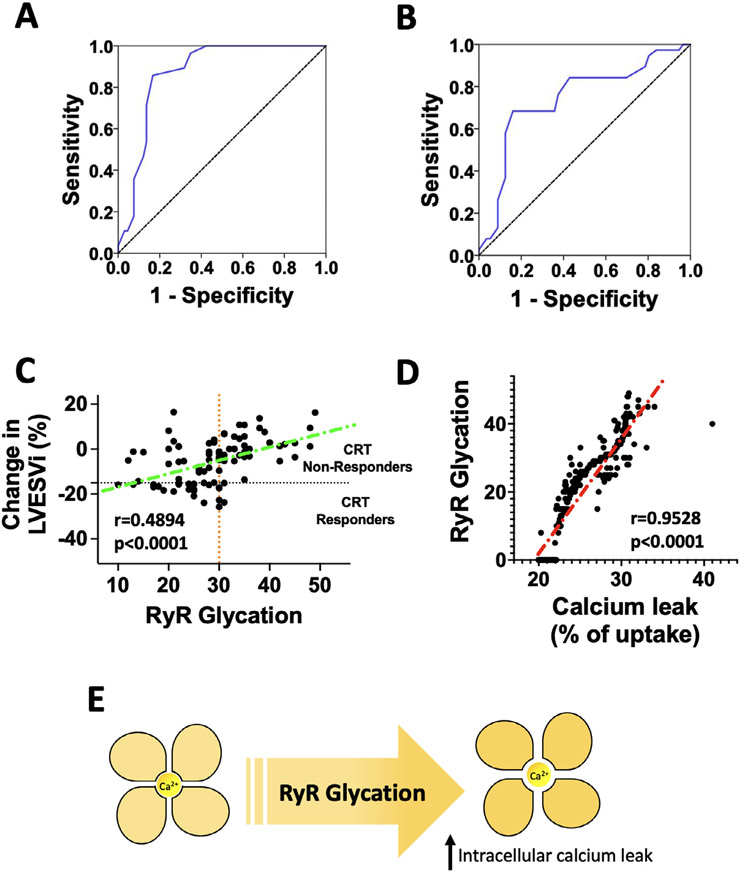Figure 1.
(A) Determination of the optimal cut off value of RyR glycation to determine CRT response using receiver operating characteristic (ROC) curve defining CRT response according to the clinical composite score (Panel A, AUC: 0.859; 95% C.I.: 0.784-0.933; Youden’s index at 30: 0.539; Sensitivity for glycation >30: 0.831; 95% C.I.: 0.784-0.933; Specificity for glycation >30: 0.827; 95% C.I.: 0.78-0.874) or volumetric parameters (Panel B, AUC: 0.743; 95% C.I.: 0.636-0.850; Youden’s index at 30: 0.523; Sensitivity for glycation >30: 0.839; 95% C.I.: 0.806-0.872; Specificity for glycation >30: 0.684; 95% C.I.: 0.633-0.735). (C) Correlation between RyR glycation and left ventricular reverse remodeling (the black dotted line represents 15% reduction in left ventricular end-systolic volume index (LVESi), while the orange dotted line represents the proposed cut-off value for RyR glycation (95% C.I.: 0.3129 to 0.6333); (D) Correlation between RyR glycation and intracellular calcium leak (95% C.I.: 0.9393 to 0.9633). E) Schematic drawing representing the tetrameric structure of RyR and how its glycation increases intracellular calcium (Ca2+) leak through the channel pore.

